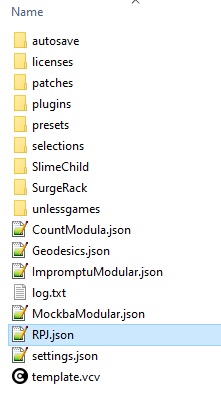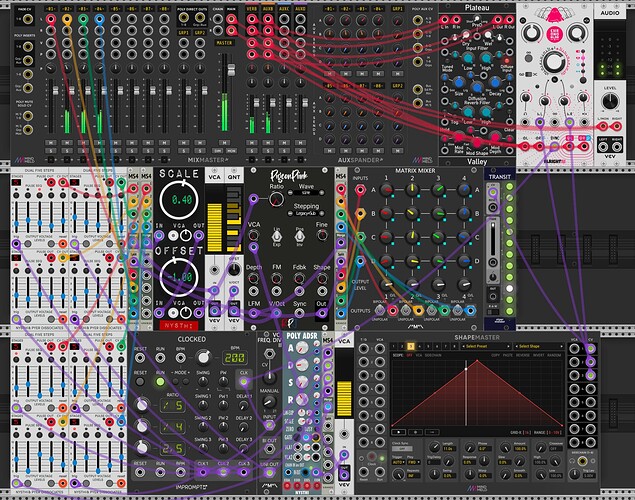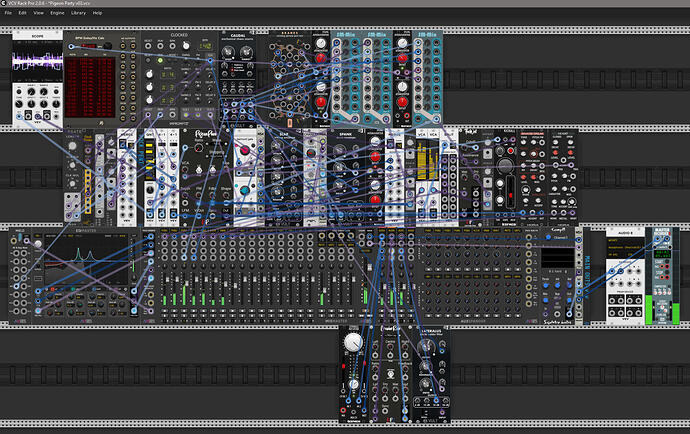A few Patch Ideas for the new RPJ Pigeon Plink.
Since I started this whole thing with a feature request on Squinkys GitHub last year, I thought that I should present this beast of a VCO and a few of the unlimited possibilities you get with it. Thanks to @Squinky for developing Kitchen Sink and a HUGE thanks to @robert.kock for porting them over to V2 and for implementing every wish I had for this module over the last weeks. @TanaBarbier added his ideas into the mix too.
But, enough babbling, here are a few patch ideas with RPJ Pigeon Plink, the first four are shown in this video:
The E-Piano A classic 6 Operator-FM Patch, with 3 Modulator-Carrier-Combinations in parallel, for playing with a keyboard.
The Selection: 6Operator_EPiano.vcvs (25.8 KB)
The first row is responsible for the Attack and Release-Sounds (Key-Off-Plink). The modulator’s VCA is set to fully open and the Polarity is reversed, so that the first ADSR is Ducking the sound while a key is pressed. The Result is, that the Output of this modulator will FM the Carrier only for a short amount of time at the beginning (attack phase) and again in the release phase of the ADSR when the key is released. Play around with the release of both adsr’s to change the amount of Key-Off-Sound. The Modulators Stepping is set to DX11 and its Ratio (around 10.00)is modulated with a polyphonic S&H to give you different timbres of the attack and release with every new note played.
The other rows are for the body of the sound, a little bit of feedback on the Carriers and a short Attack-FM. Both Carriers are detuned with the Fine Control and panned hard left and right for a bigger sound.
The LFO goes to the (exponential) FM-Modulation Input to add a little bit of vibrato. Just as a reminder and to not get confused with all the FM-Labels:
- left input bottom row is for Linear FM (Audio from a modulator), the Amount is controlled with the Depth Knob above.
- second is V/Oct, directly above is exponential FM for Pitch Modulation (Vibrato or Pitch Envelopes for Drums for example).
Add a little bit of Reverb to this or a Chorus, Phaser, Leslie, Overdrive…
Monophonic 4 Operator-FM with a single Pigeon Plink.
- because polyphony is awesome
The Selection: 4OperatorFM_SinglePigeonPlink.vcvs (19.9 KB)
This is what happens when you make every input polyphonic. Every polyphony channel is completely independent from every other channel (except Wave and Stepping Selection). Here the DivSeq is generating a monophonic Melody, which is then multiplied with the first merge to 4 channels of polyphony. The different envelopes are merged into a polyphonic modulation for the VCAs (Btw: With the next release of Nysthis Plugin you can use the 4 ATT (SUS) REL for this, @synthi was so kind to add a polyphonic envelope out to that and his other multi-envelope-modules, so no more merge needed.) The 8vert is controlling the FM-Depth of the first three channels. The next merge is to get a Trigger on Channels 2-4 for the Sample and Hold, which is modulating the Ratio of those channels. Since the first channel is the Carrier and Channels 2-4 are chained Modulators, we just want Ratio-Modulation on them, the Base Pitch of the Carrier stays the same. An LFO for a subtle vibrato with the exponential FM-Input. And now the magic of using one channel to FM another. The Output is splitted and the output of channel 4 is routed into channel 3s LFM-Input. That Output is routed to Channel 2 LFM, that one to Channel 1 LFM and that one is finally our Audio-Output. For different FM-algorythms you could of course first mix the ouputs of the Modulators in any way you like and then feed them into channel one. Or use a 4 into 2, 3 into 1 configuration with 1 and 2 both as Carriers. Or a 4 x 4 Algorythm?
Stepping is Digitone-Style in this case, it gives you the gnarly 0.75-Ratios of nowadays.
Oh, another Btw: Those steppings are defined in the File RPJ.json in your VCV User Folder. You can add your own steppings or modify the existing ones… Harmonic Series anyone? Mandelbrot-Stepping, is that a thing? Anyways, these are the ratios for a chromatic stepping from C4 to C5: {1.000, 1.060,1.123,1.188,1.259,1.335,1.415,1.498,1.587,1.682,1.782,1.888,2.000}
The Drone
3Operator Drone.vcvs (18.0 KB)
BPM-LFO Ratio-modulated “Pad”
2OperatorFM_BPMLFORatio.vcvs (18.4 KB)
While waiting for the library update I made a few “Extras”:
FM Drum Machine
Basedrum, Snare, Closed and Open Hihat
Carrier and Modulator are 4 Channels apart, so Basedrum is Carrier on Channel 1, Modulator on Channel 5, Snare is Carrier on 2, Modulator on 6 and so on. Envelopes for Pitch, Modulator-VCA and Carrier-VCA. Add a few KnolyPobs for controlling Ratio, Feedback, Shape and LFM-Depth for each channel and there you go.
FM Drum Machine.vcvs (31.1 KB)
The Choke-Function is great on the Percalls to unclutter your sounds. And I carefully programmed the beat with the HexSeq, slowly rolling my head over my keyboard…
Five-Voice Triangle/Saw Polysynth anyone?
5Voice Polysynth P101.vcvs (34.1 KB)
Synced Lead
Synced 2 OP FM.vcvs (13.8 KB)
That’s all for now. I will add a few more infos later ![]()
Hope you have fun with those!
- mo




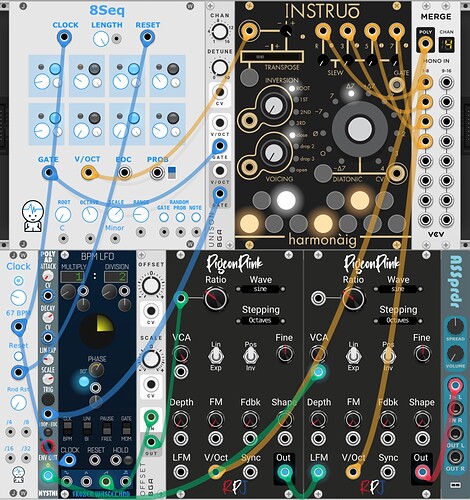

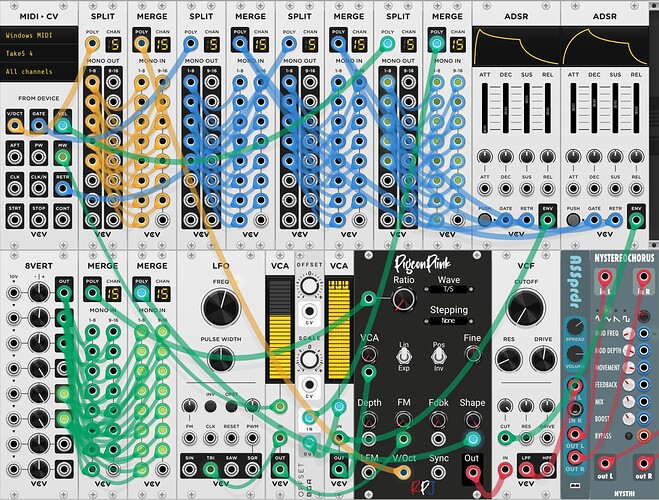
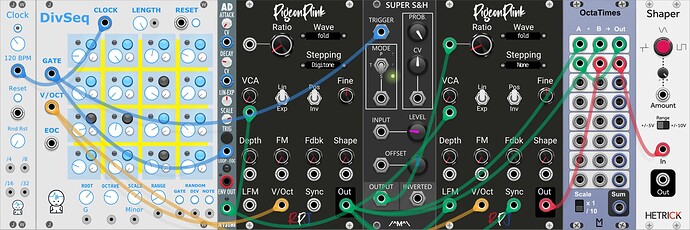
 x 10
x 10


